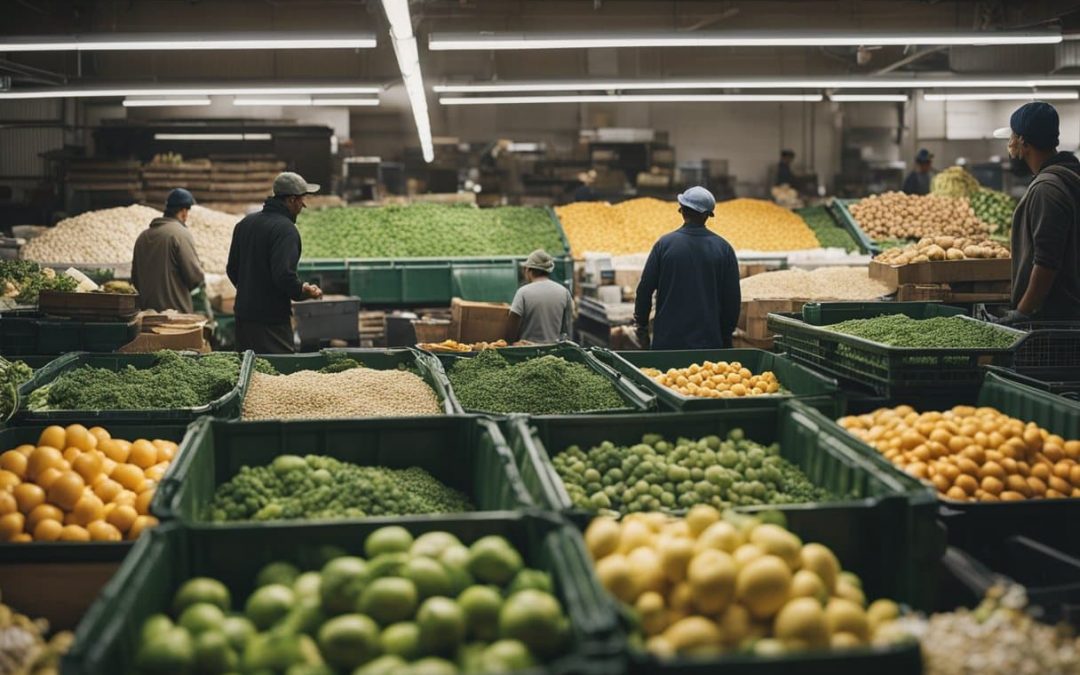A Revolutionary Shift in Sustainability
California is leading the charge in the United States with an ambitious food waste program to address the pressing issue of landfill overflow and greenhouse gas emissions. The state’s initiative launched to help meet the requirements of a new mandate, stands as a pioneering effort to divert organic waste, such as leftover food and yard debris, from traditional waste streams. This program aims to reduce environmental impact and fosters a new culture around waste management, encouraging residents and businesses alike to reconsider their approach to disposing of organic materials.
The implementation of the food waste program has seen the development of facilities like California’s first fully solar-powered compost operation, which showcases innovation in recycling technology and infrastructure. As the program rolls out, many cities and communities are adapting to the new law, which requires the separation of food waste from regular trash. Although the transition poses challenges, including the installation of new waste systems and public education, the positive long-term ramifications for carbon emissions and soil health are significant. This move solidifies California’s position at the forefront of environmental legislation, setting an example for other states to follow in the fight against climate change.
Overview of California’s Food Waste Program
California’s food waste program initiative stands as the most ambitious in the United States, mandated at a residential level to significantly reduce landfill waste.
Legislative Background
California instituted a pioneering legislation, known as SB 1383, aimed at addressing climate change by curbing emissions from organic waste. Implemented in January 2022, it is the nation’s most extensive food waste program, mandating the recycling of food scraps and other organic materials, thus diverting them away from landfills.
Goals and Objectives
The overarching objective of California’s program is to reduce landfill disposal of organic waste by 75% by 2025. This initiative also seeks to rescue at least 20% of currently disposed surplus food by 2025 to help feed Californians in need. These measures are crucial steps towards decreasing the state’s methane emissions, a potent greenhouse gas, from decomposing organic materials.
Impact on Food Waste Reduction
California’s innovative food waste program is making significant strides in reducing the amount of organic waste that ends up in landfills, to curb methane emissions and promote sustainability.
Statistical Evidence
According to data from The Mercury News, the program is facing challenges in scaling up, but evidence suggests an uptrend in residential food waste sorting efforts. The Associated Press reports that despite hurdles in program implementation, a considerable percentage of California communities have begun collecting organic waste, transitioning from traditional waste streams.
Recent Figures:
- 75% of communities started organic waste collection
- Goals: Reduce organic waste disposal by 50% by 2022, and 75% by 2025
Comparative Analysis
When examining the effectiveness of the food waste program, comparisons to other states’ waste management strategies reveal California’s ambitious approach. The Guardian article spotlights that the state’s program is the largest of its kind in the U.S., aimed at considerable methane reduction and fostering a circular economy.
Factors in California’s Favor:
- Legislative Support: Strong state-wide laws mandating recycling
- Technology Integration: Adoption of AI and robotics in sorting, highlighted by NBC Los Angeles
Despite some early challenges, the figures indicate that California’s program is altering the landscape of food waste recycling and could serve as a blueprint for other regions.
Implementation Strategies
California’s food waste program is marked by two critical implementation strategies: robust community engagement and concerted infrastructure development. These pillars are designed to foster compliance and effectiveness within the new statewide mandate to reduce organic waste in landfills.
Community Engagement
One critical aspect of rolling out California’s food waste program involves educating the public. Local governments and waste management entities are deploying outreach campaigns to inform residents about the importance of separating food waste from general trash.
- Workshops and Seminars: These events explain the recycling process and the environmental benefits of diverting food waste from landfills.
- Materials and Resources: Tailored guides and informative materials are distributed to increase understanding and encourage proper waste sorting.
Infrastructure Development
In tandem with public education, there is sizable investment in developing infrastructure capable of supporting the increase in recycled organic material.
- Composting Facilities: New and upgraded composting centers, such as California’s first fully solar-powered composting facility, are critical in processing diverted waste.
- Collection Systems: Enhanced collection services ensure that separated waste reaches the appropriate facilities, with an emphasis on efficiency and sustainability.
These targeted strategies are setting the stage for a more environmentally conscious and sustainable cycle of waste management in California, aiming for substantial reductions in landfill use and associated greenhouse gas emissions.
Challenges and Future Directions
California’s ambitious food waste program stands at a critical juncture where overcoming present challenges is as crucial as identifying avenues for future improvements.
Current Obstacles
Legislative Enforcement: California’s food waste program has encountered hurdles in the form of legislative compliance. As per reports, S.B. 1383, focusing on organic waste reduction, is faced with complexities around enforcement, with fines looming for non-compliance.
Infrastructure Snags: New initiatives often confront material hurdles; in this context, the infrastructure to manage the entirety of California’s organic waste remains underdeveloped. The nitty-gritty of these obstacles includes insufficient composting facilities and a lag in establishing widespread biogas conversion plants.
Prospective Enhancements
Technological Innovations: Future directions for the program involve investing in advanced composting techniques and biogas technologies. By harnessing state-of-the-art solutions, California aims to become a model for other states in food waste management and use.
Policy Adaptations: Adaptation and flexibility within policy implementation could drive continued success. Legislators and policymakers are working on refining the state’s approach, aiming for a balance between stringent measures and practical, achievable goals to keep California’s lead in food waste recycling.
To learn more about how Potomac eCycle can help you with your environmental issues, contact us.


Recent Comments